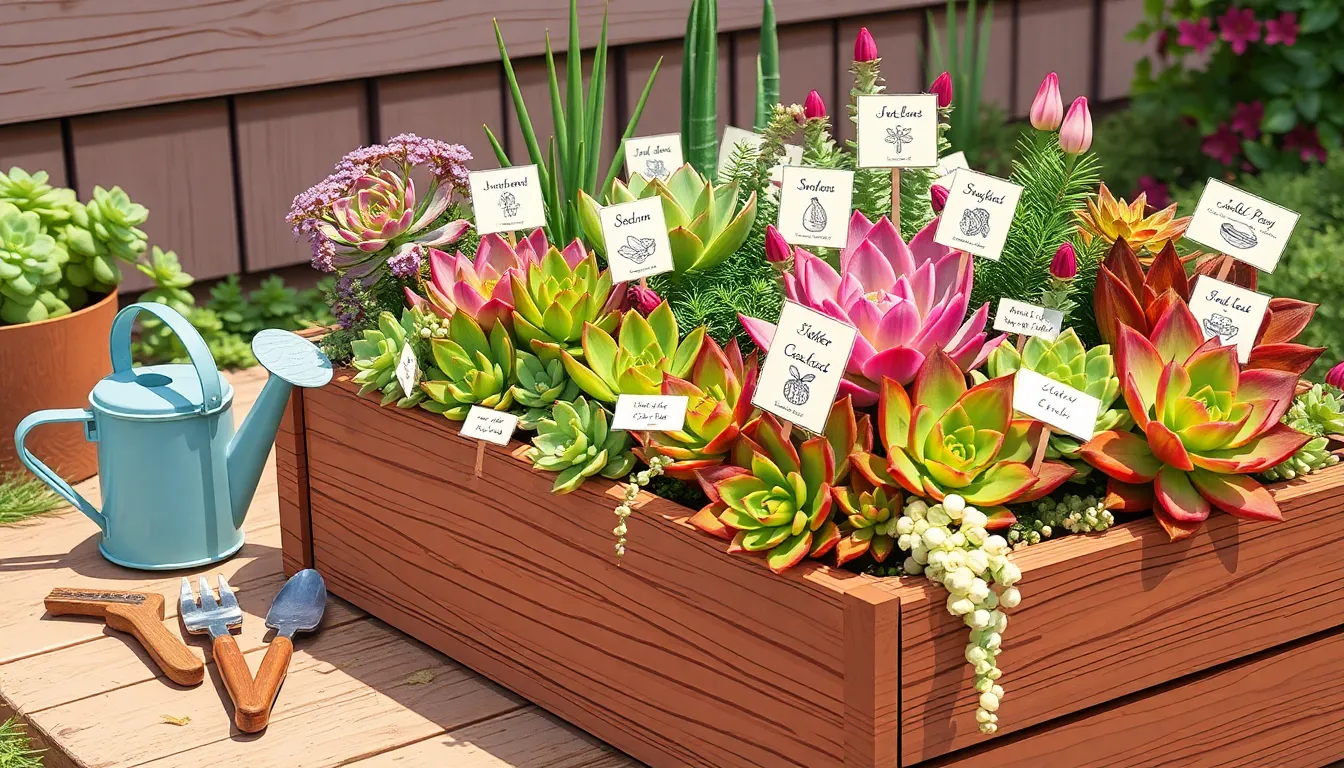For those who find joy in the simple beauty of nature, succulents offer a delightful blend of aesthetics and ease. Whether you’re a green-thumbed veteran or a budding gardener, these resilient plants can become the crown jewels of your indoor or outdoor space. Their endless variety in shapes, colors, and sizes invites creativity, turning even a small windowsill into a living masterpiece. Yet, to truly thrive, succulents require a bit more than just admiration; they need informed care throughout the year.
Understanding how to cater to your succulents’ unique needs can transform your gardening experience from good to extraordinary. By exploring this guide, you’ll discover the secrets to keeping these hardy plants thriving through every season. From watering techniques to sunlight requirements, we’ll guide you through the essentials, ensuring your succulents remain vibrant and healthy. Embrace this opportunity to deepen your connection with nature and cultivate a flourishing succulent collection that will be the envy of plant lovers everywhere.
Select Optimal Container Size
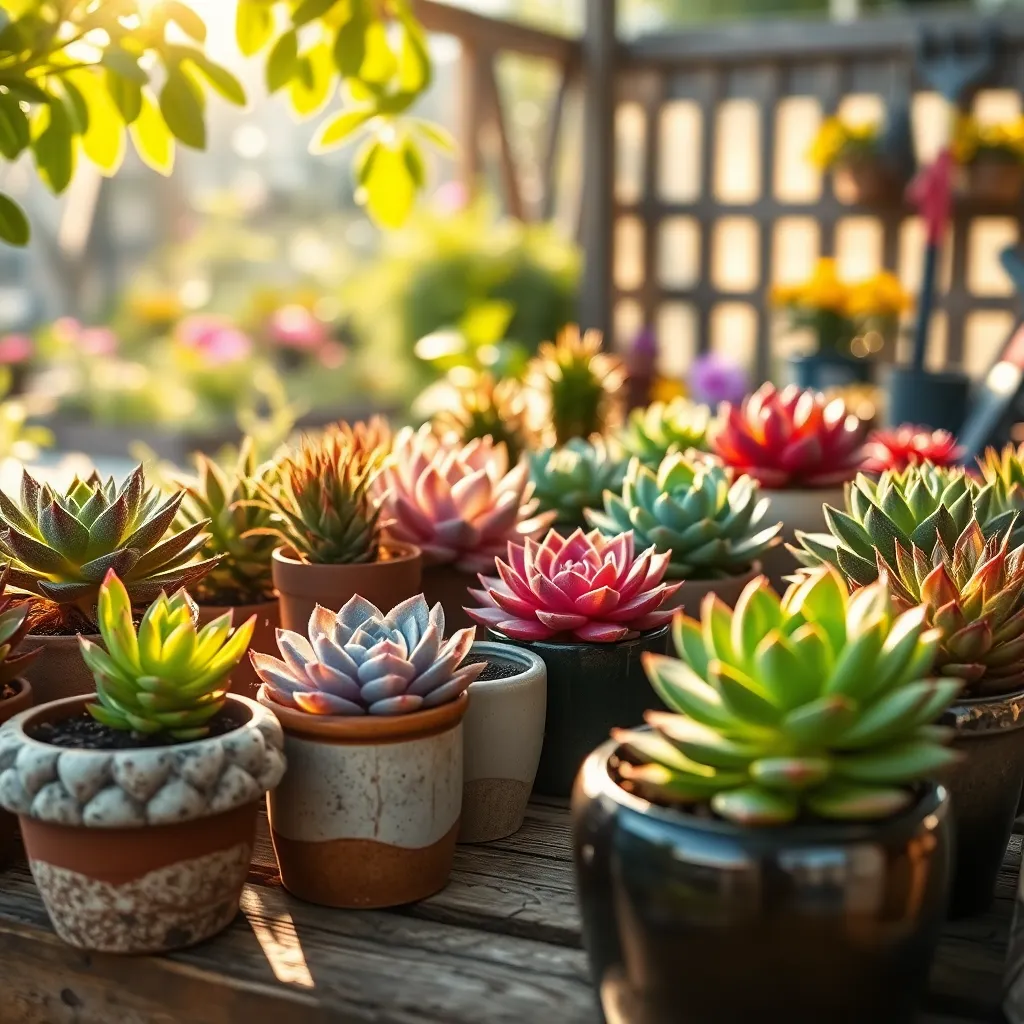
Choosing the right container size is crucial for the health and growth of your succulents. Succulents generally prefer a snug fit, as too much space can lead to excessive soil moisture, which may cause root rot.
When potting succulents, select a container that is about 5-10% larger than the plant itself. This size allows for some growth while preventing the roots from sitting in wet soil, which is detrimental to their health.
It’s also important to consider the depth of the container. Shallow pots are often ideal for succulents because most succulents have shallow roots and can thrive with less soil.
For advanced gardeners, consider using containers made of materials like terracotta or unglazed ceramic, which help with air circulation and moisture absorption. These materials assist in keeping the roots dry, which is crucial for succulents, especially in humid environments.
Ensure Proper Sunlight Exposure
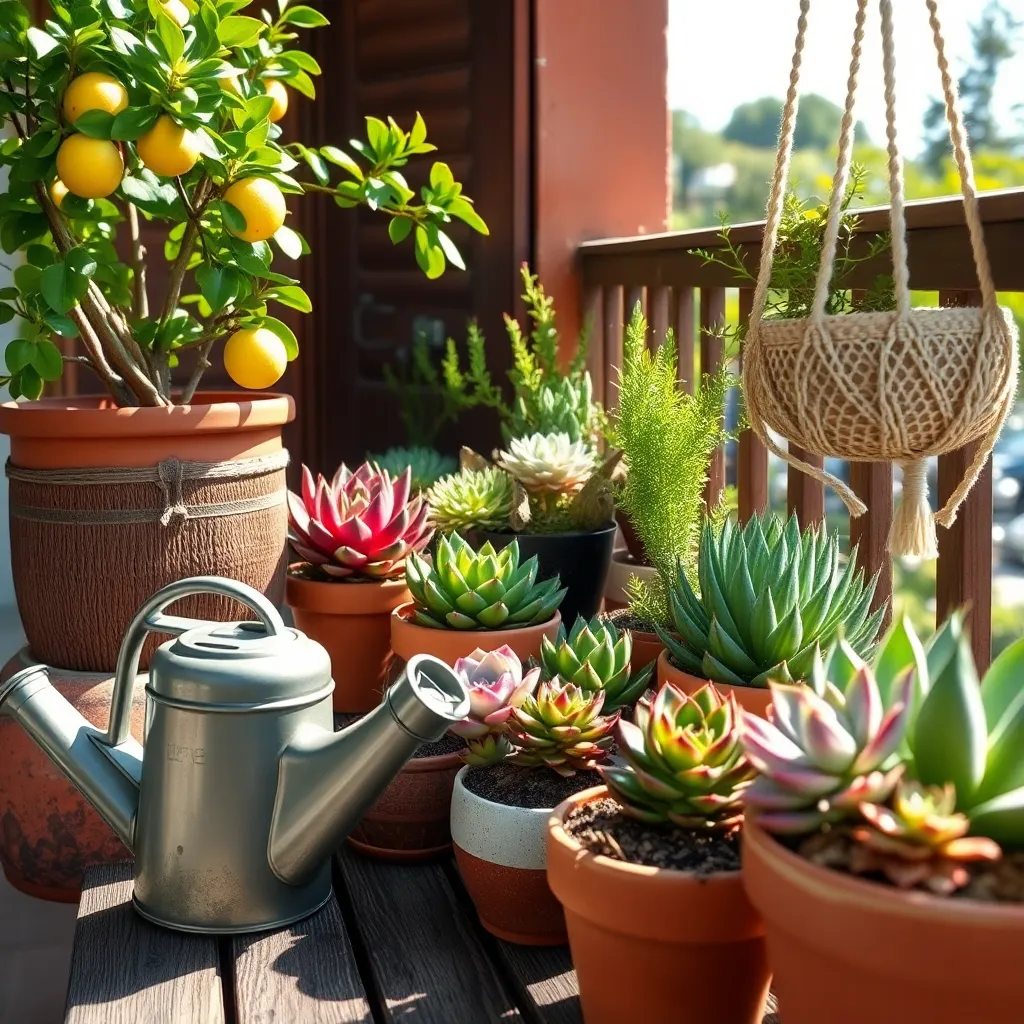
Ensuring proper sunlight exposure is crucial for the health of your succulents. These plants generally thrive in bright, indirect light, making it essential to position them near a window that receives plenty of sunshine without being too harsh.
Inadequate sunlight can cause succulents to become leggy and lose their compact shape. To prevent this, rotate your plants every few days to ensure even exposure and promote symmetrical growth.
For those with limited indoor lighting, consider using a grow light to supplement natural sunlight. Choose a full-spectrum LED grow light and position it about 6 to 12 inches above your succulents, running it for 12 to 14 hours each day.
Advanced gardeners might experiment with moving succulents outdoors during warmer months. Ensure they acclimate gradually by starting in a shaded area and slowly increasing their exposure to direct sunlight over a week or two.
Water Sparingly and Consistently
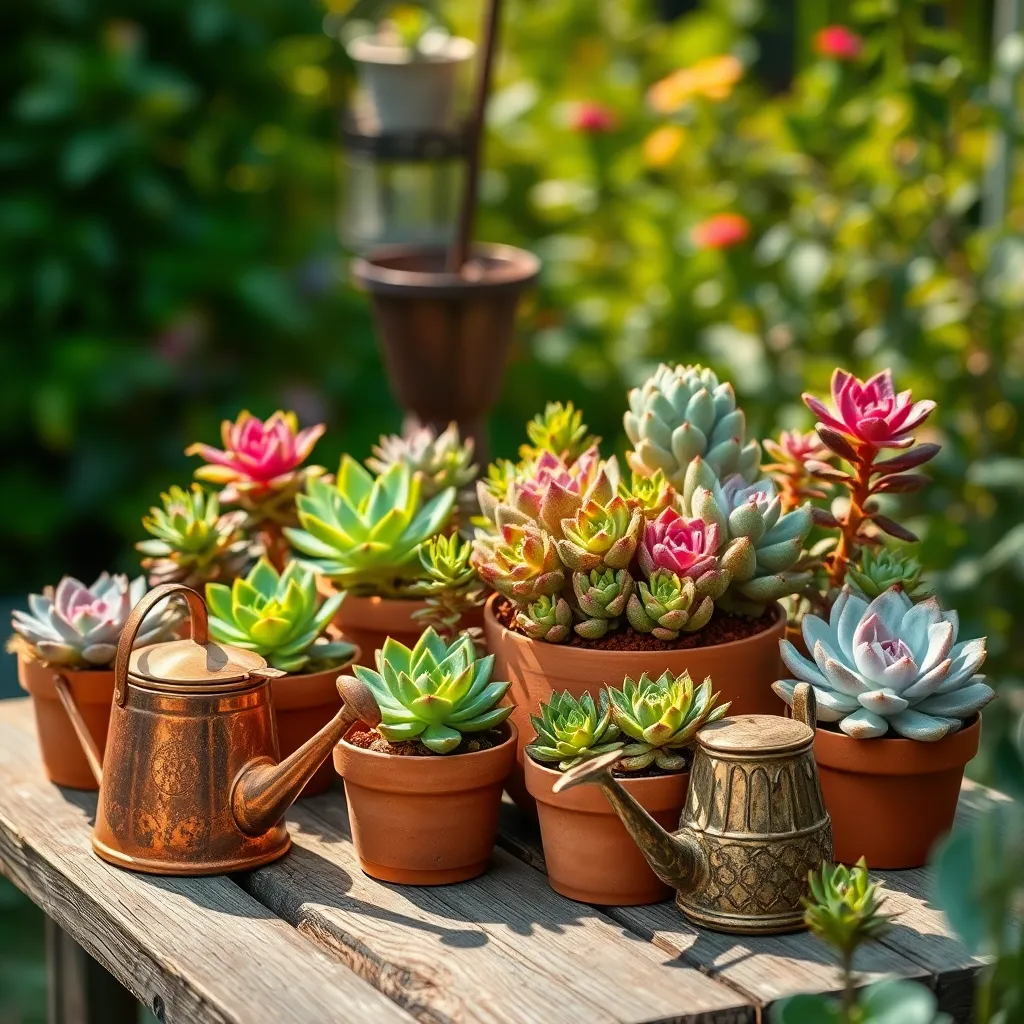
When it comes to watering succulents, the key is to be both sparing and consistent. These plants are adapted to arid environments, meaning they thrive on less water than most other houseplants.
Allow the soil to dry out completely between waterings to prevent root rot, which is a common issue with overwatering. A good rule of thumb is to water your succulents every two to three weeks, adjusting for humidity levels and the plant’s specific needs.
Use a well-draining soil mix to ensure that excess water can escape easily. Soil that retains too much moisture can lead to root rot, which is detrimental to succulents. Consider a commercial cactus mix or create your own with equal parts potting soil, sand, and perlite.
For those in regions with varying seasonal humidity, adjust your watering schedule accordingly. During the warmer months, succulents may require a bit more frequent watering, while in cooler months, they will need significantly less.
Monitor and Adjust Temperature
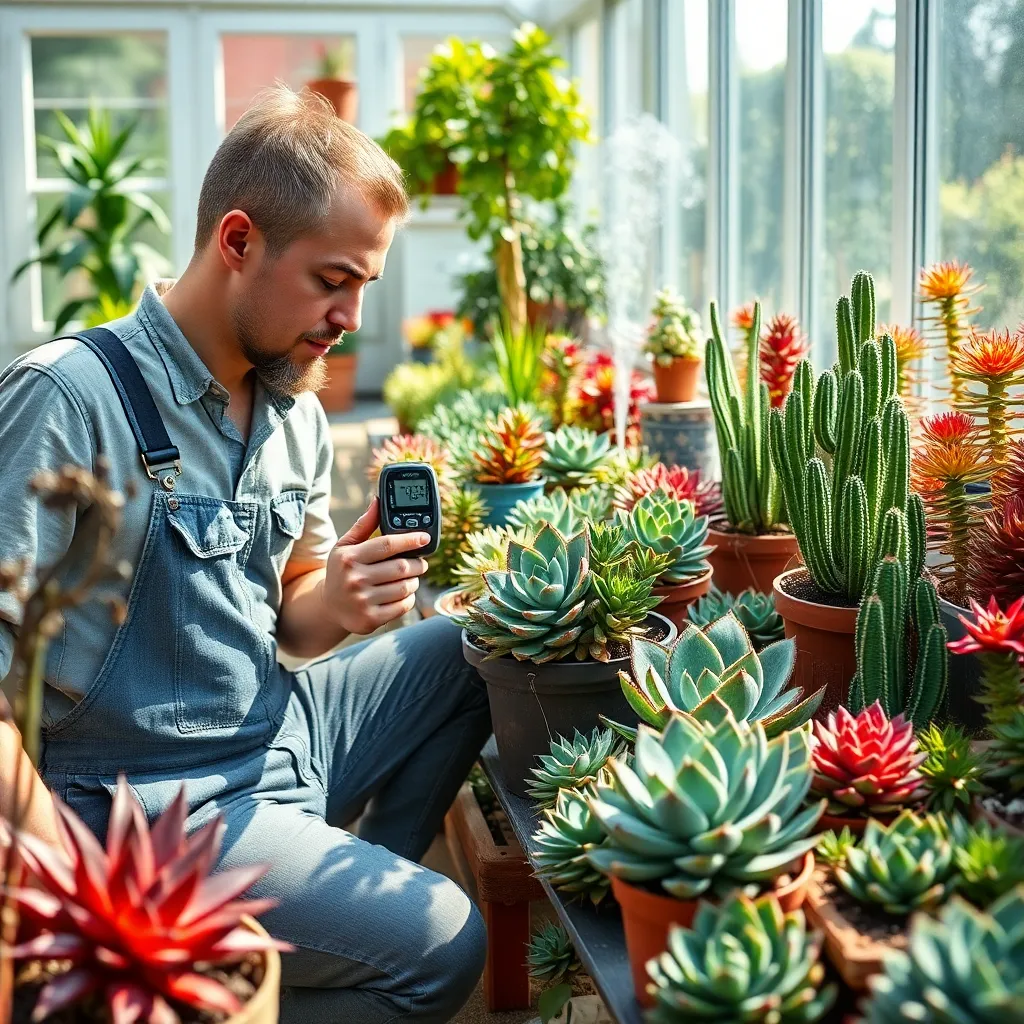
Monitoring and adjusting temperature is essential for succulent health, especially when seasons change. Succulents are sensitive to extreme temperatures, so it’s crucial to keep them in an environment where they can thrive.
During warmer months, most succulents prefer temperatures between 60°F and 80°F. If temperatures exceed this range, consider providing shade or moving them indoors during peak heat.
In colder months, protect your succulents from frost by ensuring they are in a space that remains above 40°F. If your area experiences harsh winters, bring your succulents inside or use frost cloths to shield them.
For indoor succulents, avoid placing them near heat sources or drafty windows. Stable temperatures will help prevent stress and allow your plants to grow steadily throughout the year.
Inspect for Pests and Diseases
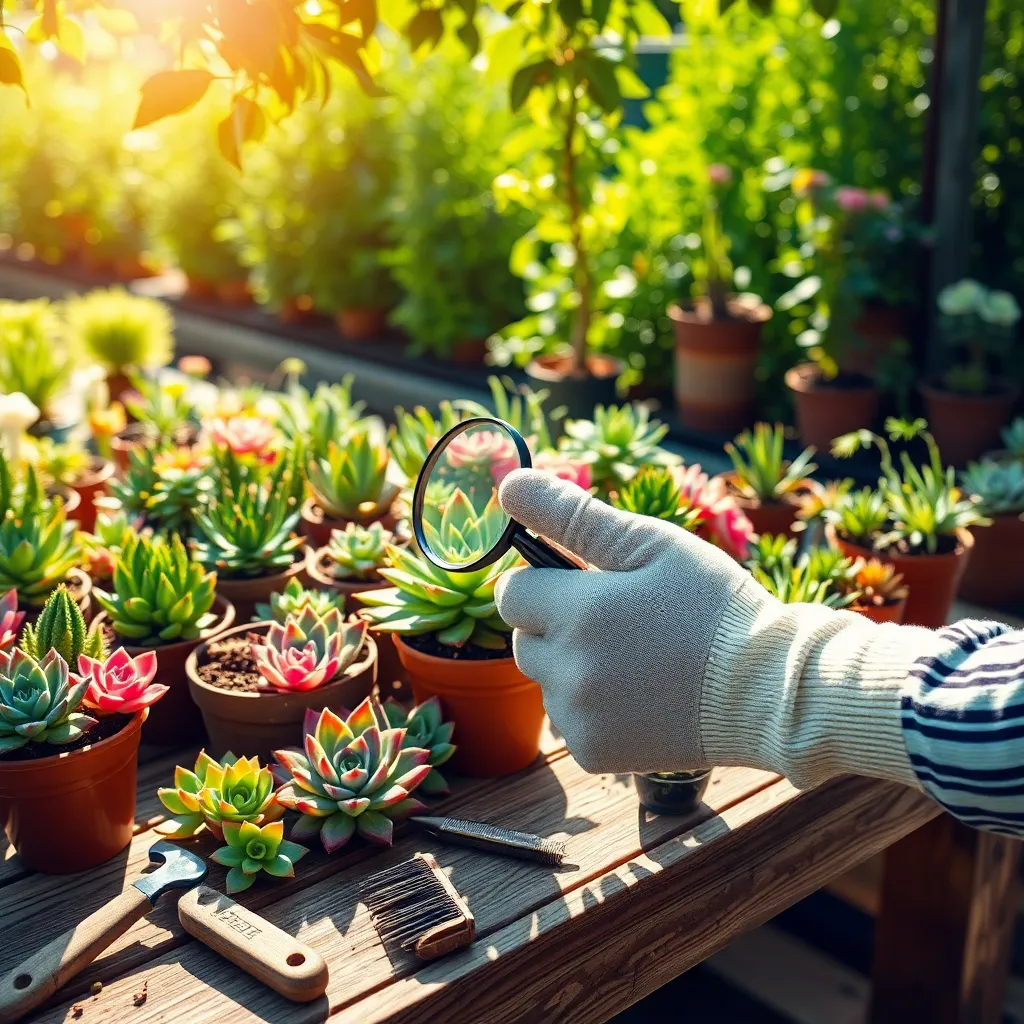
Succulents are generally hardy, but it’s important to regularly check them for any signs of pests and diseases. Look for common pests like aphids, mealybugs, and spider mites, which can often be found lurking in the crevices of leaves or stems.
In addition to pests, succulents can also suffer from diseases such as root rot and mold. To prevent these issues, ensure your succulents are planted in well-draining soil and avoid overwatering, as excess moisture is a breeding ground for fungal diseases.
Inspect your plants carefully once a week, focusing on the undersides of leaves and the stem base. Early detection is key, so if you spot any infestations or diseases, isolate the affected plant immediately to prevent spreading.
For advanced care, consider using a magnifying glass to detect tiny pests that are not visible to the naked eye. If you find pests, apply insecticidal soap or neem oil as an organic treatment option, taking care to cover all affected areas thoroughly.
Conclusion: Growing Success with These Plants
Caring for your succulents year-round parallels nurturing a thriving relationship, with both requiring consistent attention and adaptability. First, ensure proper light exposure, much like providing clarity and openness in your communication. Second, maintain the right watering schedule, akin to offering emotional support and understanding. Third, recognize the importance of suitable soil, representing a strong foundation of trust. Fourth, be vigilant against pests, just as you should address conflicts directly. Finally, embrace seasonal changes, which is similar to adapting to life’s inevitable shifts together.
Now, take a moment to assess your current relationship habits. Are you providing the right balance of light, water, and care? Consider implementing one new strategy this week to enhance your relationship’s vitality.
Remember to save or bookmark this article for future reference, as these principles are valuable guides for any relationship stage. Empower yourself to nurture your connections, and you’ll see them flourish just like a well-tended succulent garden. As you continue on this journey, know that with dedicated care and adaptability, your relationships will not only survive but thrive.

